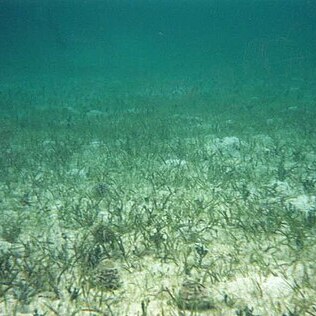Herbs with rhizomes 3-6 mm thick, the internodes 4-7 mm long; roots with longitudinal air channels, the latter with septa at intervals of 1 mm. Leaves distichously arranged on short lateral branches arising from the rhizome at inter-vals of 5-19 internodes, obtuse and sometimes emarginate apically, slightly ser-rulate near the apex, the margin entire, 10-60 cm long, 4-12 mm wide, the main veins 9-15, connected by perpendicular cross-veins at intervals of about 1 mm; the transition between the blade and the sheath marked by a straight or a down-ward curved line; sheath 6-10 cm long, sometimes slightly auriculate. Inflores-cences with the peduncle in the staminate 3-7.5 cm long, in the carpellate 3-4 cm long; spathal leaves oblong-elliptic, obtuse, serrulate, persistent, 1.5-3 cm long and 0.5-0.75 mm wide, with many short brown tannin stripes, the carpellate spathe usually only 1.5-2 cm long. Flowers with the pedicel of the staminate 12.5-25 mm long, the carpellate subsessile, after anthesis shortly pedicellate; tepals uncolored, with numerous pink to violet spots and streaks (tannin cells), elliptic to ovate, obtuse to truncate and often toothed apically, spreading or recurved, 10-12 mm long and 4-4.5 mm wide, stamens 9, the anthers oblong, 8-9 mm long and 1 mm wide; ovary conical, 1 cm long, the hypanthium ca. 2 cm long, styles 7-8, 1.5-2.5 mm long, stigma 10-13 mm long, shed after flowering. Fruits ellipsoid to globose, roughly echinate, bright green to yellow green, sometimes red, 1.5-2 cm long and 2-2.5 cm wide, the beak 4-7 mm long, splitting into 5-8 irregular valves; seeds (1-2-)3(-6), pyriform, 10 mm long and 8 mm wide.
More
Rhizomes elongate, 3--6 mm thick. Leaves 10--60 cm ´ 0.4--1.2 cmm, margins entire proximally, minutely serrulate near apex; veins 9--15. Inflorescences: staminate inflorescences 1--3-flowered; peduncles 3--7 cm; margins of spathes connate on 1 side; pistillate inflorescences 1-flowered; peduncles 3--4 cm; spathes connate on both sides. Flowers: staminate flowers: pedicels 1.2--2.5 cm; stamens 9; pistillate flowers nearly sessile, styles 7--8. Fruits bright green to yellow-green or red, 1.5--2.5 cm diam., dehiscing in 5--8 valves; beak 4--7 mm.


